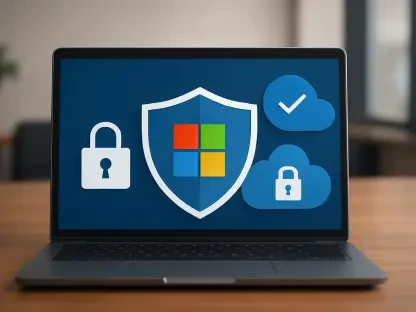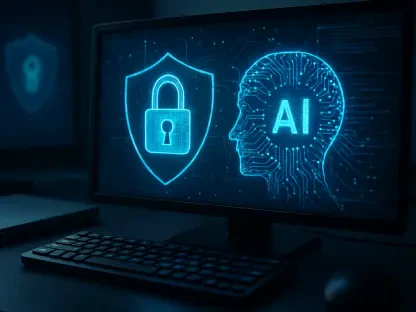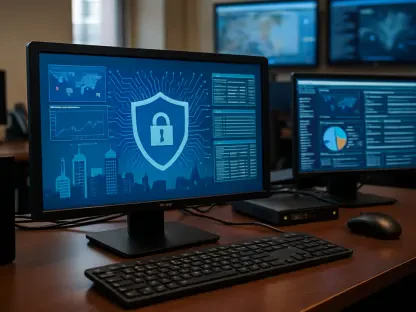In the face of increasingly complex cyber threats and the evolving digital landscape, penetration testing stands as a critical pillar of cybersecurity strategy, yet many organizations continue to prioritize compliance-driven methods. The traditional approach, primarily aimed at fulfilling regulatory requirements, often fails to adequately address the full spectrum of vulnerabilities posed by sophisticated cyber attackers. To truly safeguard their digital assets, organizations must move past the static compliance model and embrace the dynamic methodology of continuous pen testing. This transition not only enhances security posture but also aligns with the proactive attitude necessary for contemporary cybersecurity resilience.
The Limitations of Compliance-Driven Testing
Surface-Level Analysis and Its Drawbacks
Compliance-driven pen testing remains limited by its focus on achieving regulatory benchmarks, often neglecting comprehensive security needs. These tests are frequently conducted according to guidelines set by frameworks such as PCI DSS, HIPAA, and ISO 27001, aiming to provide satisfactory audit outcomes. However, this form of testing typically targets only vulnerabilities explicitly mentioned in these standards. As a result, many potential vulnerabilities that could pose significant threats are left unchecked. By sticking rigidly to compliance standards, organizations can unwittingly overlook deeper security challenges that exist beyond the scope of these benchmarks, risking exposure to significant cyber threats.
The gap between compliance and effective security is exacerbated by the static nature of regulatory standards. As cyber threats evolve rapidly, regulatory frameworks are often sluggish in incorporating new insights and vulnerabilities into their criteria. This delay creates opportunities for cyber attackers to exploit weaknesses in systems that remain undetected due to outdated or incomplete compliance measures. Furthermore, the assumption that compliance equates to complete security can lead organizations into a false sense of assurance, diminishing their perception of the actual threat landscape and hindering investments in more robust, dynamic security practices.
The False Sense of Security
Many organizations hold the mistaken belief that fulfilling compliance requirements automatically translates to comprehensive security, leading to complacency and an underestimated threat landscape. This misconception may result in organizations being ill-prepared to fight against emerging cyber threats that are dynamically adapting. Compliance-driven testing tends to focus on ticking boxes for audits and assessments, which may neglect the importance of detailed evaluation of security practices. Such an approach can result in a vulnerability gap wherein critical assets are insufficiently protected against potential threats, signaling the urgent need for a shift in security strategy.
Additionally, the static nature of compliance measures can cause organizations to fall behind in the fast-paced world of cybersecurity. These standards are typically updated slower than the rate at which cyber threats evolve, leaving systems underprotected from new vulnerabilities. Relying solely on compliance means settling for a level of security that, while meeting autonomous standards, might not adequately safeguard against sophisticated attacks and threats. Therefore, organizations must supplement compliance with continuous penetration testing to stay ahead of threats and ensure robust protection against evolving cyber adversaries.
Continuous Pen Testing: Be Proactive
Beyond Compliance: A Comprehensive Defense Strategy
Embracing a continuous penetration testing approach offers organizations a proactive method to address security risks, extending beyond the scope of compliance and achieving a comprehensive understanding of vulnerabilities. By consistently testing, organizations can proactively identify and remediate security issues before they manifest into threats. This shift involves employing skilled testers who can uncover complex flaws that autonomous scans might overlook. Continuous pen testing provides an adaptive layer of protection that can keep up with evolving threats and bolster an organization’s defense capabilities, ensuring that vulnerabilities are addressed promptly and effectively.
Pen Testing as a Service (PTaaS) illustrates how organizations can incorporate continuous testing into their security routines without overwhelming their internal resources. This subscription model allows organizations to access specialized expertise, enabling them to delve deeper into security challenges without the constraint of limited budgets or a shortage of security professionals. By adopting PTaaS, businesses can maintain a streamlined, yet thorough approach to security validation. As organizations strive to foster robust cybersecurity strategies, integrating continuous testing becomes crucial in defending against potential breaches and maintaining a resilient security posture.
Implementing Effective Pen Testing Strategies
A sound pen testing strategy should feature regular, ongoing assessments, particularly after significant technology changes or before launching major system deployments. The frequency and scope of testing should align with the risk profile and assets of each business, ensuring adequate coverage of all vulnerabilities. Regular testing facilitates continuous improvement by consistently exposing vulnerabilities that demand immediate attention, enabling a proactive stance towards cybersecurity risks. Tailored strategies, reflecting the specific industry and technological infrastructure, can effectively target latent security threats posed by sophisticated attackers.
In addition to continuous testing, organizations can integrate pen testing with External Attack Surface Management (EASM) to enhance digital footprint coverage and prioritize threats. By combining these methodologies, businesses can gain a comprehensive view of their application environments, correctly identify high-risk vulnerabilities, and prioritize threats based on their severity and potential impact. Customization in pen testing strategies ensures that unique organizational risks are effectively addressed, offering a more precise security approach than relying on generalized assessments. Cultivating robust security frameworks through customized, continuous testing builds resilience and prepares organizations to withstand and counteract potential cyber threats.
The Cultural and Operational Shift Needed
Addressing Financial and Resource Constraints
One of the significant barriers to implementing continuous pen testing is resource allocation, as organizations may struggle with limited budgets and a shortage of cybersecurity professionals. However, solutions such as PTaaS provide accessible expertise without compromising financial resources. This manageable subscription model offers the perfect balance between cost efficiency and quality, giving organizations access to specialized services that aid in identifying security challenges. Ensuring affordable access to security expertise via PTaaS enables organizations to overcome financial constraints, paving the way for enhanced security validation without additional burdens on resources or personnel.
A fundamental cultural change within organizations is also necessary. Leaders must prioritize continuous testing and proactive risk management to embed security into the company’s ethos. By shifting organizational culture towards valuing security practices as integral components of the business framework, companies can nurture a culture that emphasizes vigilance and resilience against cyber threats. Encouraging leadership to drive changes in security focus helps foster an environment geared towards continuous improvement and adaptability, making sure cybersecurity remains at the forefront of operational priorities.
Introducing Integrated Solutions for Enhanced Security
Integrated solutions provide a comprehensive approach to fortifying cybersecurity, merging methods like EASM and PTaaS to deliver thorough assessments and strategic planning. By integrating various security methodologies, organizations can gain deeper insights into their application environments, accurately identify threats, and strategically prioritize risks. Outpost24’s CyberFlex exemplifies such integrated solutions, combining EASM and PTaaS to offer organizations robust and comprehensive security coverage. Employing integrated solutions allows organizations to develop detailed threat-sustaining capabilities, addressing vulnerabilities efficiently and enhancing overall security posture.
Such comprehensive solutions facilitate informed decision-making, enable detailed prioritization, and guide organizations in implementing effective assessments. Integrating multiple security methodologies prevents potential vulnerabilities from being overlooked, ensuring businesses remain protected against evolving threats. As the cybersecurity landscape continually shifts, adopting comprehensive solutions that take a holistic view of security practices becomes critical, sparking the necessary evolution in cybersecurity strategy that organizations need to uphold a strong defense against the modern-day threat landscape.
Rethinking Security Practices for Future Resilience
Transitioning to a Proactive Security Mindset
The narrative surrounding penetration testing is shifting from a compliance-centric perspective to a continuous, proactive approach essential for future cybersecurity resilience. By recognizing the limitations of compliance-centered practices, organizations can foster robust security measures needed to counteract sophisticated threats. Viewing pen testing as an integral component of comprehensive security underscores its necessity in proactive defense mechanisms. This transformation reflects an essential evolution in the cybersecurity domain, moving away from short-term regulatory satisfaction toward long-term resilience against cyber adversaries.
Investing in continuous security validation ensures organizations remain guarded against potential vulnerabilities, thereby safeguarding infrastructure and data from unauthorized access. Such proactive security measures prepare businesses not only for upcoming threats but also for adapting to industry challenges. As technological landscapes continue to evolve, embracing continuous testing molds a security framework that is both adaptable and resilient, vital to uphold strong defenses and encourage cybersecurity innovation. A shift toward proactive security practices places organizations in a favorable position to preemptively address challenges, unleashing new possibilities for discovering more effective security measures.
Navigating Future Cybersecurity Landscapes
As cyber threats grow more complex and the digital landscape continually shifts, penetration testing remains a crucial component of any robust cybersecurity strategy. Despite this, numerous organizations still focus heavily on compliance-driven tactics. These conventional methods are largely aimed at meeting regulatory standards and often miss the mark when it comes to addressing the wide range of vulnerabilities that sophisticated cybercriminals can exploit. To truly protect their digital infrastructures, companies need to go beyond static compliance models, integrating the more adaptive approach of continuous penetration testing. This transition is vital not only for significantly improving security measures but also for fostering a more proactive stance, which is essential for effective modern-day cybersecurity resilience. By adopting continuous pen testing, organizations can stay ahead of cyber threats, ensure their digital assets are well-guarded, and align themselves with the right mindset to tackle the ongoing challenges of evolving cyber threats.









